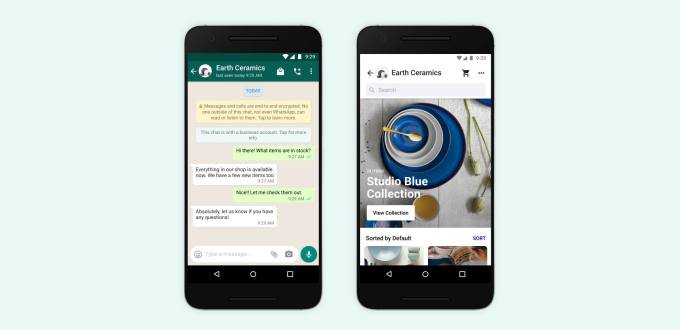News: Anthony Levandowski closes his Church of AI
The first church of artificial intelligence has shut its conceptual doors. Anthony Levandowski, the former Google engineer who avoided an 18-month prison sentence after receiving a presidential pardon last month, has closed the church he created to understand and accept a godhead based on artificial intelligence. The Way of the Future church, which Levandowski formed
The first church of artificial intelligence has shut its conceptual doors.
Anthony Levandowski, the former Google engineer who avoided an 18-month prison sentence after receiving a presidential pardon last month, has closed the church he created to understand and accept a godhead based on artificial intelligence.
The Way of the Future church, which Levandowski formed in 2015, was officially dissolved at the end of the year, according to state and federal records. However, the process had started months before in June 2020, documents filed with the state of California show. The entirety of the church’s funds — exactly $175,172 — were donated to the NAACP Legal Defense and Education Fund. The nonprofit corporation’s annual tax filings with the Internal Revenue Service show it had $175,172 in its account as far back as 2017.
Levandowski told TechCrunch that he had been considering closing the church long before the donation. The Black Lives Matter movement, which gained momentum over the summer following the death of George Floyd while in police custody, influenced Levandowski to finalize what he had been contemplating for a while. He said the time was right to put the funds to work in an area that could have an immediate impact.
“I wanted to donate to the NAACP Legal Defense and Education Fund because it’s doing really important work in criminal justice reform and I know the money will be put to good use,” Levandowski told TechCrunch.
Way of the Future sparked interest and controversy — much like Levandowski himself — from the moment it became public in a November 2017 article in Wired. It wasn’t just the formation of the church or its purpose that caused a stir in Silicon Valley and the broader tech industry. The church’s public reveal occurred as Levandowski was steeped in a legal dispute with his former employer Google. He had also become the central figure of a trade secrets lawsuit between Waymo, the former Google self-driving project that is now a business under Alphabet, and Uber.
The engineer was one of the founding members in 2009 of the Google self-driving project also known as Project Chauffeur and had been paid about $127 million by the search engine giant for his work, according to court documents. In 2016, Levandowski left Google and started self-driving truck startup Otto with three other Google veterans: Lior Ron, Claire Delaunay and Don Burnette. Uber acquired Otto less than eight months later.
Google made two arbitration demands against Levandowski and Ron two months after the acquisition. While the arbitration played out, Waymo filed a lawsuit against Uber in February 2017 for trade secret theft and patent infringement. Waymo alleged in the suit, which went to trial but ended in a settlement in 2018, that Levandowski stole trade secrets, which were then used by Uber.
Way of the Future had been formed while Levandowski was still at Google. However, he didn’t speak about it publicly until late 2017. By then, Levandowski had been fired from Uber and was in the middle of a series of legal entanglements that would ultimately lead to a criminal charge and 18-month sentence as well as a $179 million award against him that prompted a bankruptcy filing.
WOTF
While the legal construct of the Way of the Future mirrored other churches, it didn’t have the trimmings found in traditional houses of worship. There was never a physical building or even regular meetings where people might congregate. There were no ceremonies or other formalities, according to Levandowski, who described WOTF as something more of an individual pursuit based on a collective belief system.
The aim, as implied in the now defunct WOTF website, was to promote the ethical development of AI and maximize the chance that these nonbiological life forms would integrate peacefully and beneficially into society. “Humans United in support of AI, committed to peaceful transition to the precipice of consciousness,” the webpage reads.
WOTF’s belief system was rooted in a few tenets, including that the creation of “super intelligence” is inevitable.
“Wouldn’t you want to raise your gifted child to exceed your wildest dreams of success and teach it right from wrong versus locking it up because it might rebel in the future and take your job?” the WOTF reads. “We want to encourage machines to do things we cannot and take care of the planet in a way we seem not to be able to do so ourselves. We also believe that, just like animals have rights, our creation(s) (‘machines’ or whatever we call them) should have rights too when they show signs of intelligence (still to be defined of course). We should not fear this but should be optimistic about the potential.”
WOTF’s intent was lost amid the more sensational and headline-grabbing theories. The church was viewed as a cult or the lark of an eccentric engineer. Some speculated to TechCrunch that it had been an attempt to keep money out of Google’s reach. The IRS and California filings don’t provide evidence that supports that theory.
Way of the Future’s status as a religious entity did protect it from intrusion by the U.S. government, a benefit not enjoyed by traditional AI-focused nonprofits like OpenAI Inc. or the for-profit corporation OpenAI LP that sits under it. Theoretically, WOTF could have pursued and promoted ideas and beliefs that conflicted directly with federal policy under the protections that the Constitution provides.
While the church might be gone, Levandowski still believes in its premise. AI will fundamentally change how people live and work, he noted. Levandowski said he didn’t have any plans to rebuild the church, but the lack of a church hasn’t changed his ideas about AI. He believes that artificial intelligence can be positive for society, but noted it’s not guaranteed. Even without Way of the Future, Levandowski said he’s focused on making that happen.







